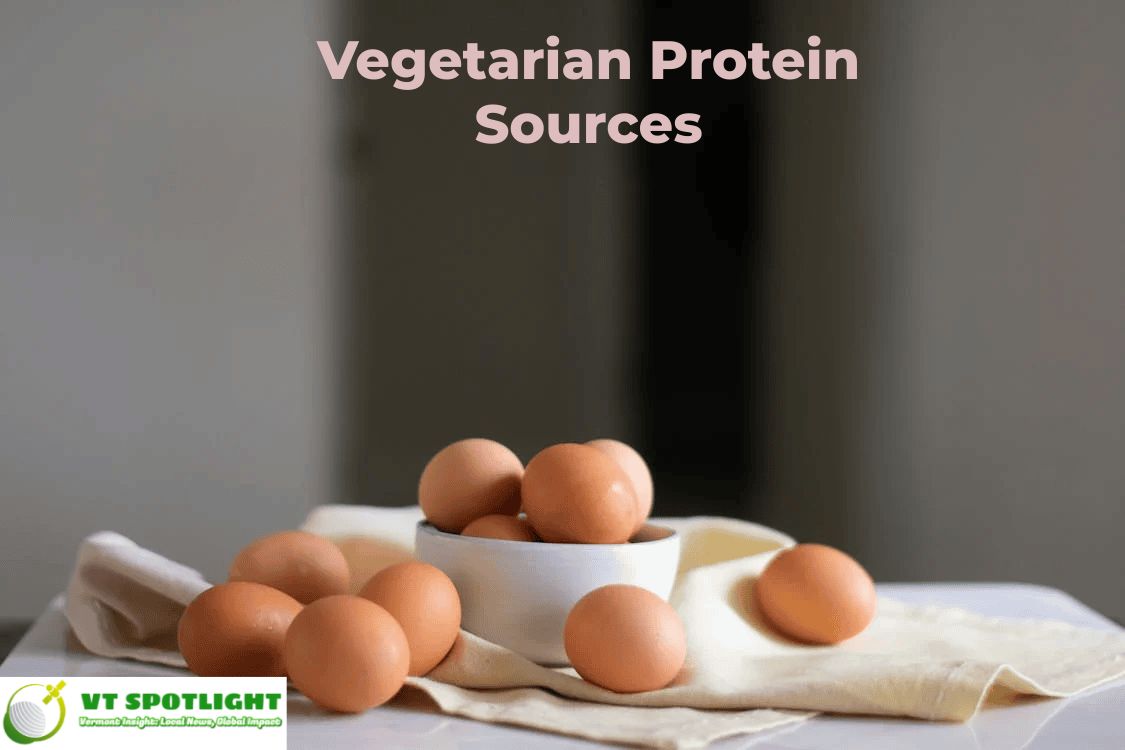In the modern world, more individuals are embracing a vegetarian lifestyle for various reasons, including health benefits, environmental concerns, and ethical considerations. One common concern among new vegetarians is how to meet their protein needs without consuming animal products. This guide provides a detailed look at the best vegetarian protein sources, ensuring you receive all the essential nutrients to maintain a healthy and balanced diet.
Understanding Protein Needs
Before delving into specific vegetarian protein sources, it is crucial to understand the importance of protein in our diet. Proteins are the building blocks of our body, essential for muscle repair, immune function, and overall growth. The average adult requires about 46-56 grams of protein per day, depending on age, sex, and activity level.
Top Vegetarian Protein Sources
1. Legumes
Legumes are a cornerstone of vegetarian diets, offering a rich source of protein along with fiber, iron, and other vital nutrients. Some of the most popular legumes include:
- Lentils: With approximately 18 grams of protein per cooked cup, lentils are not only high in protein but also in fiber, promoting digestive health.
- Chickpeas: Also known as garbanzo beans, chickpeas provide around 14.5 grams of protein per cooked cup and are incredibly versatile in dishes such as hummus, salads, and stews.
- Black Beans: These beans offer 15 grams of protein per cooked cup and are excellent in tacos, burritos, and soups.
- Peas: Green peas are a lesser-known protein powerhouse, with 8.6 grams per cooked cup, ideal for adding to soups, salads, and stir-fries.
2. Soy Products
Soy is one of the most protein-rich vegetarian foods, often used as a meat substitute in various dishes. Key soy products include:
- Tofu: Also known as bean curd, tofu provides about 10 grams of protein per half-cup serving. It is incredibly versatile, absorbing flavors well in stir-fries, soups, and even desserts.
- Tempeh: Made from fermented soybeans, tempeh contains around 21 grams of protein per 3-ounce serving. Its firm texture makes it a great addition to sandwiches, salads, and stir-fries.
- Edamame: These young soybeans offer 17 grams of protein per cooked cup and are perfect as a snack or in salads and rice bowls.
3. Quinoa
Quinoa is a complete protein, meaning it contains all nine essential amino acids. This grain-like seed provides 8 grams of protein per cooked cup and is also high in magnesium, iron, and fiber. Quinoa can be used in salads, as a side dish, or even in breakfast bowls.
4. Nuts and Seeds
Nuts and seeds are not only great sources of protein but also provide healthy fats, fiber, and various vitamins and minerals. Some of the best options include:
- Almonds: With 6 grams of protein per ounce, almonds are perfect for snacking, adding to salads, or making almond butter.
- Chia Seeds: These tiny seeds pack a punch with 4 grams of protein per 2 tablespoons. They are also rich in omega-3 fatty acids and fiber, perfect for adding to smoothies, yogurt, or making chia pudding.
- Pumpkin Seeds: Also known as pepitas, these seeds offer 7 grams of protein per ounce and are great for snacking or topping salads and oatmeal.
- Hemp Seeds: Containing 10 grams of protein per 3 tablespoons, hemp seeds are a nutritional powerhouse, excellent for adding to smoothies, cereals, and salads.
5. Dairy and Eggs
For lacto-ovo vegetarians who include dairy and eggs in their diet, these can be excellent protein sources:
- Greek Yogurt: This thick, creamy yogurt provides 10 grams of protein per 100-gram serving and is also rich in probiotics for gut health.
- Cottage Cheese: With 14 grams of protein per half-cup, cottage cheese is a great addition to breakfast bowls, snacks, or even savory dishes.
- Eggs: One large egg contains about 6 grams of high-quality protein, along with essential vitamins and minerals. Eggs are incredibly versatile, suitable for breakfast, salads, and more.
6. Seitan
Seitan, also known as wheat gluten, is a popular meat substitute made from gluten, the main protein in wheat. It contains about 25 grams of protein per 3.5 ounces and has a meat-like texture, making it an excellent choice for vegetarian dishes that mimic meat.
7. Whole Grains
Whole grains are often overlooked as protein sources, but they contribute significantly to daily protein intake:
- Oats: With 6 grams of protein per cup (cooked), oats are perfect for a nutritious breakfast.
- Brown Rice: Offering around 5 grams of protein per cup (cooked), brown rice can be a part of various dishes from stir-fries to bowls.
- Barley: With 3.5 grams of protein per cup (cooked), barley adds a chewy texture and nutty flavor to soups and salads.
Combining Foods for Complete Proteins
While many plant-based foods do not contain all essential amino acids, combining different protein sources can ensure you get a complete protein profile. Some effective combinations include:
- Rice and Beans: Together, they provide a complete amino acid profile.
- Hummus and Pita: Chickpeas and whole grain pita make a protein-rich snack.
- Peanut Butter on Whole Grain Bread: A classic combination that offers a complete protein.
Conclusion
Adopting a vegetarian diet does not mean compromising on protein intake. By incorporating a variety of the aforementioned protein sources, you can easily meet your daily protein needs while enjoying a diverse and flavorful diet. Remember to balance your meals with a mix of legumes, soy products, nuts, seeds, dairy, eggs, seitan, and whole grains to ensure you get all the essential nutrients for optimal health.
Embrace these vegetarian protein sources and thrive on a plant-based diet that nourishes both your body and the planet.
In Hindi
आधुनिक दुनिया में, अधिक से अधिक लोग स्वास्थ्य लाभ, पर्यावरणीय चिंताओं और नैतिक विचारों के कारण शाकाहारी जीवन शैली को अपनाने लगे हैं। नए शाकाहारियों के बीच एक सामान्य चिंता यह होती है कि पशु उत्पादों का सेवन किए बिना प्रोटीन की आवश्यकताओं को कैसे पूरा किया जाए। यह मार्गदर्शिका सबसे अच्छे शाकाहारी प्रोटीन स्रोतों पर विस्तृत जानकारी प्रदान करती है, जिससे आप सभी आवश्यक पोषक तत्व प्राप्त कर सकें और एक स्वस्थ और संतुलित आहार बनाए रख सकें।
प्रोटीन की आवश्यकताएँ समझना
विशिष्ट शाकाहारी प्रोटीन स्रोतों पर जाने से पहले, हमारे आहार में प्रोटीन के महत्व को समझना महत्वपूर्ण है। प्रोटीन हमारे शरीर के निर्माण खंड होते हैं, जो मांसपेशियों की मरम्मत, प्रतिरक्षा प्रणाली के कार्य और समग्र विकास के लिए आवश्यक होते हैं। औसत वयस्क को प्रति दिन लगभग 46-56 ग्राम प्रोटीन की आवश्यकता होती है, जो उम्र, लिंग और गतिविधि स्तर पर निर्भर करता है।
सर्वश्रेष्ठ शाकाहारी प्रोटीन स्रोत
1. दालें
दालें शाकाहारी आहार का एक महत्वपूर्ण हिस्सा होती हैं, जो प्रोटीन के साथ-साथ फाइबर, आयरन और अन्य महत्वपूर्ण पोषक तत्व प्रदान करती हैं। सबसे लोकप्रिय दालों में शामिल हैं:
- मसूर की दाल: पकी हुई एक कप मसूर की दाल में लगभग 18 ग्राम प्रोटीन होता है, जो न केवल प्रोटीन में उच्च होती है बल्कि फाइबर में भी, जो पाचन स्वास्थ्य को बढ़ावा देती है।
- चना: जिसे काबुली चना भी कहा जाता है, पके हुए एक कप चने में लगभग 14.5 ग्राम प्रोटीन होता है और यह हम्मस, सलाद और स्टू जैसे व्यंजनों में अत्यधिक उपयोगी होता है।
- काली बीन्स: इन बीन्स में पके हुए एक कप में 15 ग्राम प्रोटीन होता है और यह टैकोस, बुरिटोस और सूप्स में बेहतरीन होती हैं।
- मटर: हरी मटर प्रोटीन का एक अज्ञात पावरहाउस है, पकी हुई एक कप मटर में 8.6 ग्राम प्रोटीन होता है, जो सूप, सलाद और स्टिर-फ्राई में जोड़ने के लिए आदर्श होती है।
2. सोया उत्पाद
सोया सबसे प्रोटीन-समृद्ध शाकाहारी खाद्य पदार्थों में से एक है, जो विभिन्न व्यंजनों में मांस के विकल्प के रूप में अक्सर उपयोग होता है। प्रमुख सोया उत्पादों में शामिल हैं:
- टोफू: जिसे बीन कर्ड भी कहा जाता है, आधा कप टोफू में लगभग 10 ग्राम प्रोटीन होता है। यह बेहद बहुमुखी है और स्टिर-फ्राई, सूप और यहां तक कि डेसर्ट में स्वाद को अच्छे से सोख लेता है।
- टेम्पेह: किण्वित सोयाबीन से बना, टेम्पेह में प्रति 3 औंस सर्विंग में लगभग 21 ग्राम प्रोटीन होता है। इसका मजबूत बनावट इसे सैंडविच, सलाद और स्टिर-फ्राई में जोड़ने के लिए बेहतरीन बनाता है।
- एडामेमे: ये युवा सोयाबीन पके हुए एक कप में 17 ग्राम प्रोटीन प्रदान करते हैं और स्नैक, सलाद और राइस बाउल्स में परिपूर्ण होते हैं।
3. क्विनोआ
क्विनोआ एक पूर्ण प्रोटीन है, जिसका मतलब है कि इसमें सभी नौ आवश्यक अमीनो एसिड होते हैं। यह अनाज जैसे बीज पके हुए एक कप में 8 ग्राम प्रोटीन प्रदान करता है और मैग्नीशियम, आयरन और फाइबर में भी उच्च होता है। क्विनोआ को सलाद, साइड डिश, या यहां तक कि ब्रेकफास्ट बाउल्स में उपयोग किया जा सकता है।
4. नट्स और बीज
नट्स और बीज न केवल प्रोटीन के अच्छे स्रोत हैं बल्कि स्वस्थ वसा, फाइबर और विभिन्न विटामिन और खनिज भी प्रदान करते हैं। कुछ बेहतरीन विकल्प शामिल हैं:
- बादाम: एक औंस बादाम में 6 ग्राम प्रोटीन होता है, जो स्नैकिंग, सलाद में जोड़ने या बादाम मक्खन बनाने के लिए आदर्श होता है।
- चिया बीज: ये छोटे बीज प्रति 2 टेबलस्पून में 4 ग्राम प्रोटीन प्रदान करते हैं। ये ओमेगा-3 फैटी एसिड और फाइबर में भी समृद्ध होते हैं, जो स्मूदी, योगर्ट या चिया पुडिंग में जोड़ने के लिए परिपूर्ण होते हैं।
- कद्दू के बीज: जिन्हें पेपिटास भी कहा जाता है, ये बीज प्रति औंस में 7 ग्राम प्रोटीन प्रदान करते हैं और स्नैकिंग या सलाद और ओटमील में टॉपिंग के लिए महान होते हैं।
- हेंप बीज: 3 टेबलस्पून में 10 ग्राम प्रोटीन के साथ, हेंप बीज पोषण के पावरहाउस होते हैं, जो स्मूदी, सीरियल और सलाद में जोड़ने के लिए उत्कृष्ट होते हैं।
5. डेयरी और अंडे
लैक्टो-ओवो शाकाहारियों के लिए जो अपने आहार में डेयरी और अंडे शामिल करते हैं, ये उत्कृष्ट प्रोटीन स्रोत हो सकते हैं:
- ग्रीक योगर्ट: यह गाढ़ा, क्रीमी योगर्ट प्रति 100 ग्राम सर्विंग में 10 ग्राम प्रोटीन प्रदान करता है और आंत स्वास्थ्य के लिए प्रोबायोटिक्स में भी समृद्ध होता है।
- कॉटेज चीज़: आधा कप में 14 ग्राम प्रोटीन के साथ, कॉटेज चीज़ नाश्ते के बाउल्स, स्नैक्स, या यहां तक कि सवोरी डिश में जोड़ने के लिए एक महान विकल्प है।
- अंडे: एक बड़ा अंडा लगभग 6 ग्राम उच्च गुणवत्ता वाला प्रोटीन प्रदान करता है, जिसमें आवश्यक विटामिन और खनिज भी होते हैं। अंडे बेहद बहुमुखी होते हैं, जो नाश्ते, सलाद और अधिक में उपयुक्त होते हैं।
6. सैटन
सैटन, जिसे गेहूं ग्लूटेन भी कहा जाता है, एक लोकप्रिय मांस विकल्प है जो गेहूं में मुख्य प्रोटीन से बना होता है। इसमें प्रति 3.5 औंस में लगभग 25 ग्राम प्रोटीन होता है और इसका मांस जैसा बनावट इसे शाकाहारी व्यंजनों के लिए एक उत्कृष्ट विकल्प बनाता है जो मांस की नकल करते हैं।
7. साबुत अनाज
साबुत अनाज अक्सर प्रोटीन स्रोतों के रूप में नजरअंदाज किए जाते हैं, लेकिन ये दैनिक प्रोटीन सेवन में महत्वपूर्ण योगदान करते हैं:
- ओट्स: पके हुए एक कप ओट्स में 6 ग्राम प्रोटीन होता है, जो एक पौष्टिक नाश्ते के लिए परिपूर्ण होता है।
- ब्राउन राइस: पके हुए एक कप में लगभग 5 ग्राम प्रोटीन प्रदान करता है, ब्राउन राइस विभिन्न व्यंजनों में स्टिर-फ्राई से लेकर बाउल्स तक का हिस्सा बन सकता है।
- बार्ली: पके हुए एक कप में 3.5 ग्राम प्रोटीन के साथ, बार्ली सूप और सलाद में एक चबाया हुआ बनावट और स्वादिष्ट नट्स का स्वाद जोड़ता है।
पूर्ण प्रोटीन के लिए खाद्य पदार्थों का संयोजन
हालांकि कई पौधों पर आधारित खाद्य पदार्थों में सभी आवश्यक अमीनो एसिड नहीं होते हैं, विभिन्न प्रोटीन स्रोतों को मिलाकर आप एक पूर्ण प्रोटीन प्रोफाइल सुनिश्चित कर सकते हैं। कुछ प्रभावी संयोजन शामिल हैं:
- चावल और बीन्स: साथ में, ये एक पूर्ण अमीनो एसिड प्रोफाइल प्रदान करते हैं।
- हम्मस और पिटा: चने और साबुत अनाज पिटा एक प्रोटीन-समृद्ध स्नैक बनाते हैं।
- पूरी अनाज ब्रेड पर पीनट बटर: एक क्लासिक संयोजन जो एक पूर्ण प्रोटीन प्रदान करता है।
निष्कर्ष
शाकाहारी आहार अपनाने का मतलब प्रोटीन सेवन से समझौता करना नहीं है। ऊपर बताए गए प्रोटीन स्रोतों की विविधता को शामिल करके, आप अपने दैनिक प्रोटीन आवश्यकताओं को आसानी से पूरा कर सकते हैं जबकि एक विविध और स्वादिष्ट आहार का आनंद ले सकते हैं। अपने भोजन को दालें, सोया उत्पाद, नट्स, बीज, डेयरी, अंडे, सैटन और साबुत अनाज के मिश्रण से संतुलित रखें ताकि आप सभी आवश्यक पोषक तत्व प्राप्त कर सकें और उत्तम स्वास्थ्य प्राप्त कर सकें।




